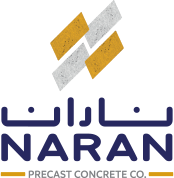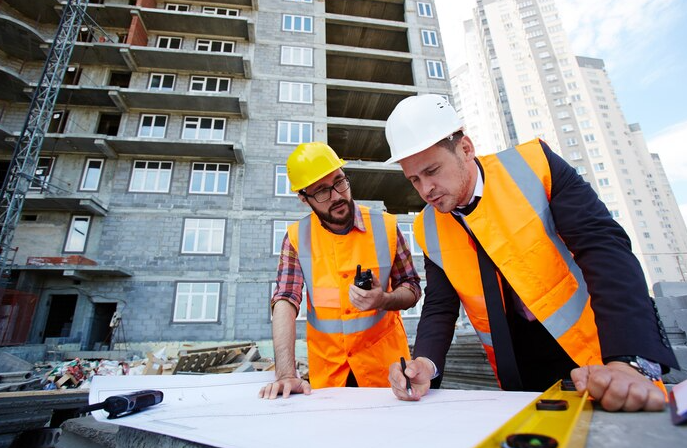Building construction is a really complex undertaking that requires you to be very detail-oriented and vigilant. From constructing residential houses and apartments to commercial hubs, medical facilities, and manufacturing plants, there are a few steps that are almost identical in each case.
To ensure an efficient and smooth running of the construction phase, you need to move strategically. By following the right whole building construction steps, you can minimize the construction time and ensure you are not forgetting key aspects of the process.
In this article, we are going to explore the building construction process in detail from the very start to finish. This information will help you know what to expect during the process and approach it in a way that saves you both time and money, so stay with us till the end.
- Pre-Construction Processes
- Acquire the Land
- Build the Plan
- Budget Estimation
- Documentation
- Building Construction Process
- Site Clearing and Preparation
- Excavation and Foundation
- Framing and Masonry
- Mechanical, Electrical, and Plumbing
- Roofing
- Exterior and Interior Finishing
- Painting
- Post-Construction Processes
- Installing Fixtures, Finishes, and Closures
- The Walk-Through
- Handover
Pre-Construction Processes
The following are the main steps involved in the pre-construction process:
1. Acquire the Land
The first step is the land acquisition, which should be done after considering factors like the size of the building, location, feasibility studies, and the project’s cost-effectiveness.
For example, if you are building a factory or industrial plant, you need a location where the raw materials are easily and quickly available. You can use the same approach with other types of buildings.
2. Build the Plan
After that, you need to create a concept, design, and blueprint for the building with the help of an engineering, design, and detailing service. You can get assistance from top architects in the field to ensure everything meets your needs as well as local standards.
After the blueprints, you will need the necessary building and construction permits. As the process goes on, you will need to acquire different permits at different points to ensure everything is up to code.
3. Budget Estimation
Once that is done, you need a project costing service that will carry out a survey to determine the overall costs of the construction after considering things like the cost of machinery, labor, materials, etc.
This helps you plan the construction process by keeping in mind your financial capacity.
4. Documentation
Before you embark on a building construction project, it is better to secure the permissions from relevant authorities and get registered. Keep the approved -document showing the transfer/purchase of the site by your side to avoid legal issues.
Also, make sure to keep documents like land survey reports, soil test reports, certificates of undertaking, architectural drawings, and other key documents in a file at a safe location where you can easily access them when needed.
Building Construction Process
Once you have acquired the land and have received permissions. You can start the building construction process at once.
Here are a few steps involved in this phase
5. Site Clearing and Preparation
First, you need to close the construction site using some sort of fence to ensure public and worker safety and a smooth running of the operation. Get rid of things like trees, weeds, debris, and other unwanted materials from the site.
Site preparation may also include things like soil stabilization, demolition, and access road construction.
6. Excavation and Foundation
After clearing, you need to excavate the land either manually or with the help of large-scale excavators, based on the size of the site and the type of material being removed.
The excavation process may also vary based on the purpose of the project, like a trench, road, basement, bridge, etc.
After the excavation, the foundations are poured based on the structure and designs of the building. Concrete foundations are mostly used, but the choice may vary based on the water table level and soil composition.
For low-rise buildings, shallow foundations while for high-rise buildings, pile foundations are recommended.
7. Framing and Masonry
In this time-consuming and crucial step, wood frames and steel beams are installed to provide support to the building. After framing, the masonry work starts, which involves the placement of bricks or concrete blocks according to the designs and binding them with cement mortar mix.
8. Mechanical, Electrical, and Plumbing
Mechanical systems like HVAC, electrical wiring, and plumbing are done after the masonry work. Things like heating and cooling systems, ventilation, roof and floor drains, gas lines, and internet or utility cables are installed at this point.
9. Roofing
During the same time, the electrical and plumbing systems are being done, roofers will come and do their job. The roof protects your interior from rain and intense sunlight. You can choose the type of roofing based on your interior needs and building type.
10. Exterior and Interior Finishing
Exterior finishing involves plastering the external walls and adding external cladding. Plastering adds strength to your building’s structure and makes it look more attractive.
After that, the interior walls are also plastered, and the tiles are installed on the floors. You can also go with some other flooring option based on your needs.
Interior finishing also involves things like drywall, ceiling, and insulation installation.
11. Painting
Finally, you can hire professional painters for the exterior and interior of your building. You can ask these people about the types of paint that will work best on your building exterior, protecting it from rain, sunlight, and other harsh weather conditions for years.
Pick a color combination that complements your interior and allows you to create a pleasant and attractive vibe.
Post-Construction Phase
Here is what you need to do following the completion of the construction process
12. Installing Fixtures, Finishes, and Closures
At this stage, you will add fixtures and closers to end the project. Things like glassware, doors, windows, carpeting, and carpentry are done at this point. It also involves adding things like toilets, cabinets, elevators, lights, etc., to the building.
13. The Walk-Through
After the completion, the contractor or its team must walk through the building to ensure all the project specifications have been met. This helps the contractors to ensure the building meets the requirements of the local authorities and the needs of their clients.
14. Handover
After this, the contractor notifies the owner about the completion and gives them sufficient time to examine the entire building. The contractor also provides necessary support and training so that the owner can comfortably operate and navigate every aspect of the building.
Finally, the contractor hands over the finished building, its blueprints, and the operation manuals to the owner.
Conclusion
The building construction process involves so many aspects, and for it to be a success, you need to plan and execute in an organized manner. By dividing the construction process into three phases and completing the steps involved in each phase before jumping to the next phase, you can ensure a smooth running of the construction process.
It takes so much time and resources to finish a building construction process, and you simply cannot afford to make mistakes that you will have to correct later once the project is finished.
So, make yourself familiar with the basic building construction processes and proceed as we have mentioned above to get quicker and better results.
Visit Naran Precast Concrete today to get top-quality commercial and residential building construction services in the UAE.

